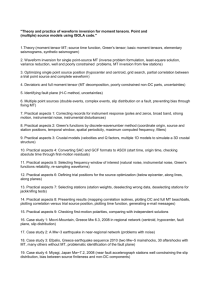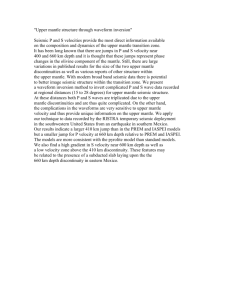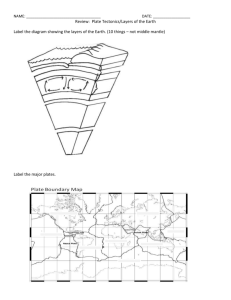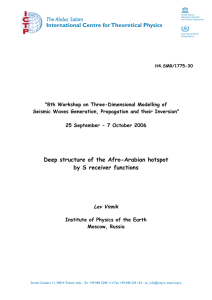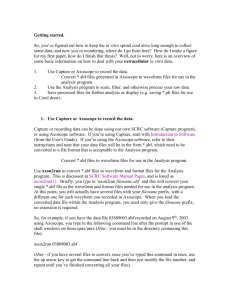grl52521-sup-0001-documentS1
advertisement
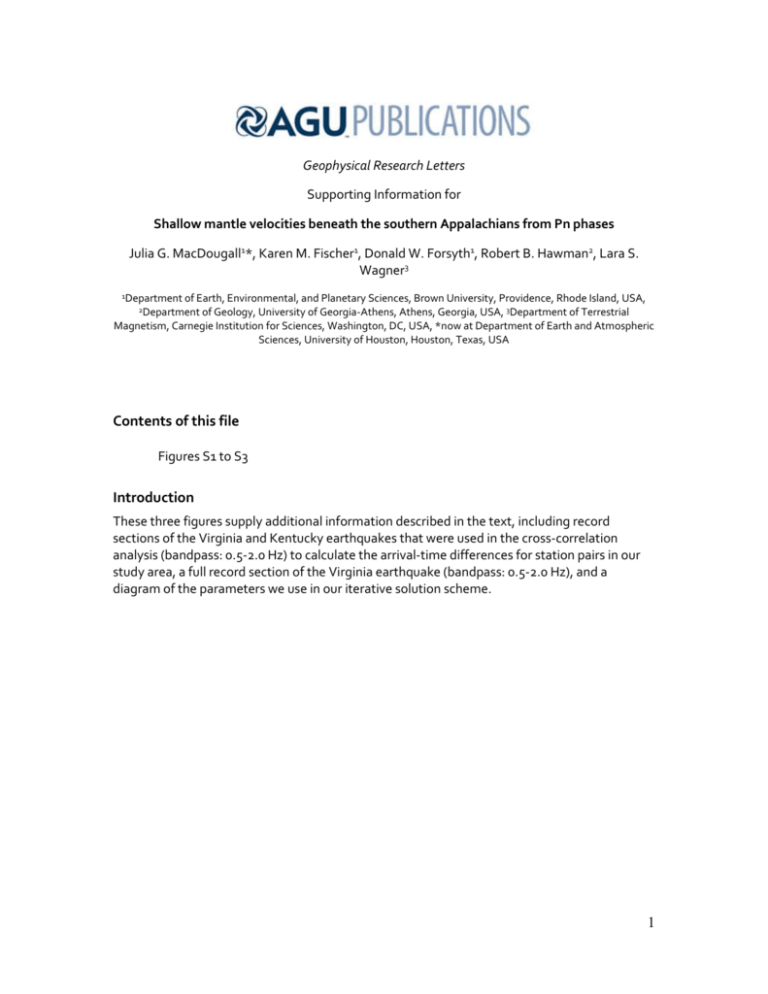
Geophysical Research Letters Supporting Information for Shallow mantle velocities beneath the southern Appalachians from Pn phases Julia G. MacDougall1*, Karen M. Fischer1, Donald W. Forsyth1, Robert B. Hawman2, Lara S. Wagner3 1Department of Earth, Environmental, and Planetary Sciences, Brown University, Providence, Rhode Island, USA, of Geology, University of Georgia-Athens, Athens, Georgia, USA, 3Department of Terrestrial Magnetism, Carnegie Institution for Sciences, Washington, DC, USA, *now at Department of Earth and Atmospheric Sciences, University of Houston, Houston, Texas, USA 2Department Contents of this file Figures S1 to S3 Introduction These three figures supply additional information described in the text, including record sections of the Virginia and Kentucky earthquakes that were used in the cross-correlation analysis (bandpass: 0.5-2.0 Hz) to calculate the arrival-time differences for station pairs in our study area, a full record section of the Virginia earthquake (bandpass: 0.5-2.0 Hz), and a diagram of the parameters we use in our iterative solution scheme. 1 Figure S1. Vertical component seismograms for the a) 23 August 2011 Mineral, Virginia and b) 10 November 2012 Whitesburg, Kentucky earthquakes. Waveforms were normalized to a CMG3T instrument response and causally filtered at 0.5-2 Hz. Time was reduced by a velocity of 8 km/s, and waveform amplitudes were multiplied by epicentral distance (in km). Pink bars show representative waveform windows used to obtain differential times by cross-correlation. Blue arrows show examples of Pn onsets in time; Pn is observed at the D-line stations for the Virginia earthquake but onsets are not marked. Only waveforms contributing differential times to this study are shown. Pn phases arrive first without interference from later phases. The one exception is the Kentucky earthquake waveform at station W53A in which direct P arrives at a time close to Pn, leading us to calculate mantle velocities for North group differential times with and without W53A. 2 Figure S2. Vertical component seismograms for the 23 August 2011 Mineral, Virginia earthquake, including SESAME and permanent station waveforms not used in the solving for mantle velocities because the station did not form a pair with another within the 3.1° limit for differences in back-azimuth. Waveforms were normalized to a CMG-3T instrument response and causally filtered at 0.5-2 Hz. Time was reduced by a velocity of 8 km/s, and waveform amplitudes were multiplied by epicentral distance (in km). This record section demonstrates that Pn phases arrive first with minimal interference from later phases at least to the maximum distance of 7° used in this study. 3 Figure S3. Parameters used in solving for mantle P-wave velocity. HA and HB, VA and VB, and θA and θB are the crustal thicknesses, crustal velocities, and critical angles beneath the near and far stations in a differential time pair, respectively. In this example, the near station is on the SESAME D-line and the far station is on the W-line. Dashed purple lines represent the crustal path lengths beneath each station, and the blue line is the mantle path length difference (corresponding to the horizontal axis in Figure 3). Vm is mantle velocity. α represents the dip of the Moho. 4


